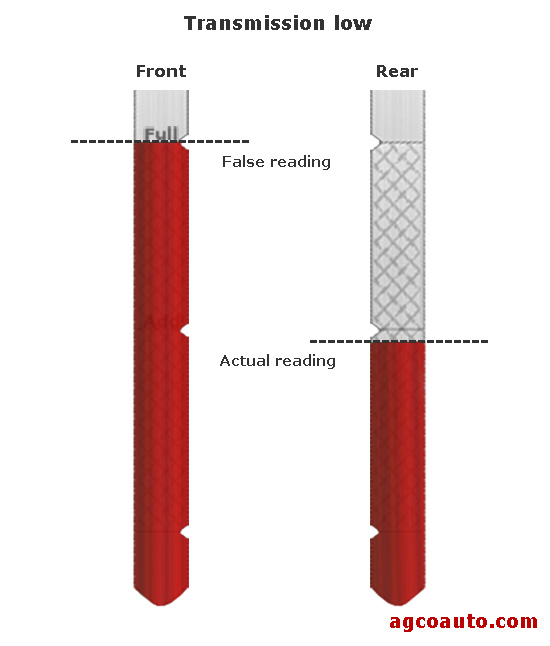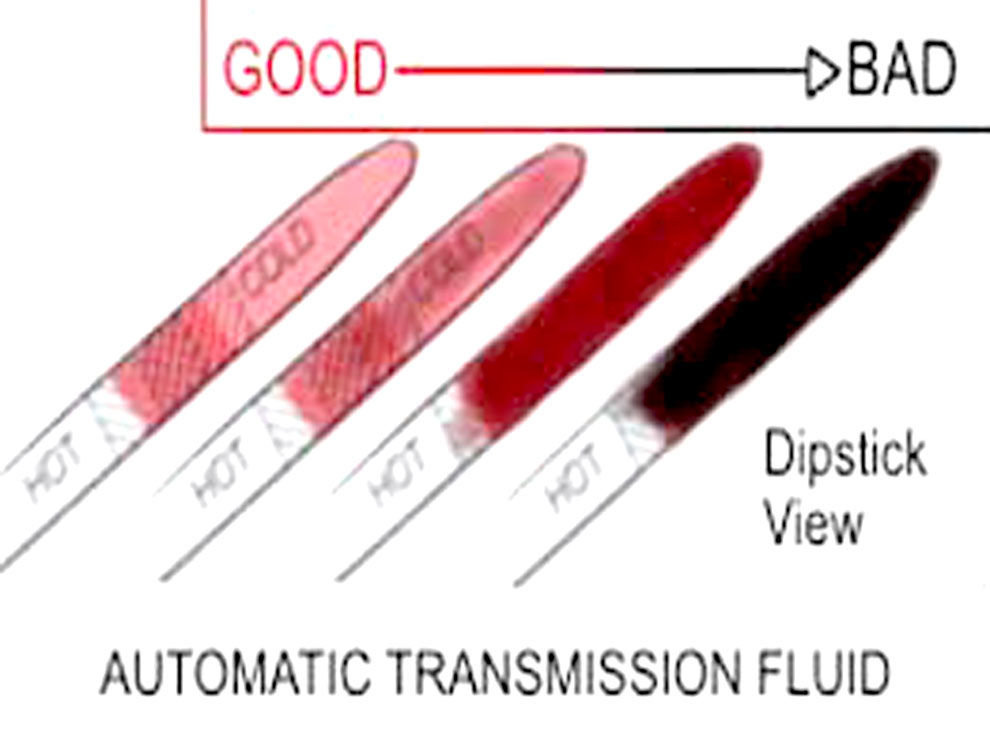Checking your transmission fluid is crucial for car maintenance. Reading the dipstick is easy.
Knowing how to read a transmission fluid dipstick can save you from costly repairs. Proper fluid levels keep your car running smoothly and prevent damage. Many drivers overlook this simple task, but it is essential for your vehicle’s health. In this guide, we will walk you through the steps to read your transmission fluid dipstick.
Understanding these steps will help you maintain your car and ensure it runs efficiently. Let’s dive in and learn how to check this vital fluid properly.

Credit: www.youtube.com
Preparing Your Vehicle
Checking transmission fluid dipstick ensures your vehicle runs smoothly. Simply locate the dipstick, pull it out, and wipe it clean. Reinsert, then pull out again to check fluid level and condition.
Parking On A Level Surface
Park your car on a flat surface. This ensures an accurate reading. Make sure the area is safe and free from traffic. Use the parking brake to keep the car still.
Warming Up The Engine
Start the engine and let it run. Wait for about 10 minutes. The engine should reach its normal temperature. Warm fluid gives a more accurate measurement. Turn off the engine after warming up.

Credit: www.agcoauto.com
Locating The Dipstick
Open the car hood. Look near the engine. The transmission dipstick is often close to the firewall. It is usually labeled. Some cars have a red handle. Others may have a different color. Make sure to check the car manual for guidance.
The transmission dipstick is different from the oil dipstick. Oil dipsticks are often yellow. Transmission dipsticks are red or orange. Oil dipsticks are usually shorter. Transmission dipsticks are longer and thinner. Always read the labels to avoid mistakes.
Removing The Dipstick
Pull the dipstick out to check the transmission fluid level. Wipe it clean, then reinsert and remove again.
Turning Off The Engine
Make sure the car is parked. Turn off the engine completely. Wait for a few minutes. This lets the transmission fluid settle. The fluid needs to cool down a bit.
Pulling Out The Dipstick
Open the car hood. Find the transmission dipstick. It usually has a bright handle. Pull it out slowly. Wipe it clean with a rag or paper towel. Insert it back fully into the tube. Pull it out again to check the fluid level.
Cleaning The Dipstick
Use a clean cloth to wipe the dipstick. Make sure it is free from dirt and old fluid. A clean cloth helps get accurate readings. Dirt can mix with the fluid and give a wrong result. Always keep the cloth free of any particles.
Wipe off all the fluid on the dipstick. Check both sides carefully. Remove any excess fluid. This ensures no old fluid affects your reading. Clean it well before checking the level again.
Reinserting And Removing Again
To read the transmission fluid dipstick, first remove it and wipe it clean. Then, reinsert and remove it again to check the fluid level.
Inserting Dipstick Back
First, clean the dipstick with a rag. Make sure it is free from dirt. Then, locate the dipstick tube. Insert the dipstick back into the tube. Push it all the way in. This ensures an accurate reading. Wait a few seconds. Let the fluid settle.
Pulling Out To Check Level
Pull the dipstick out again. Look at the fluid level on the stick. Compare it to the markings on the stick. If the fluid is below the “Full” mark, add more fluid. If it is above, you may have too much. Repeat the process to double-check. Always use the correct transmission fluid type.
Reading The Fluid Level
First, locate the transmission fluid dipstick. It is usually in the engine bay. Pull it out and wipe it clean. Reinsert it fully, then pull it out again. Look at the end of the dipstick. There are two main markings: “Full” and “Add”. The fluid level should be between these two marks. If it’s below the “Add” mark, you need to add more fluid. If it’s above the “Full” mark, it could mean overfilling.
Ensure the car is on a level surface. Check the fluid level again. Compare the fluid level to the markings. The fluid should be at the “Full” mark when the car is warm. If the fluid is low, add fluid until it reaches the “Full” mark. Do not overfill. Overfilling can cause problems. Always use the correct type of fluid for your car.
Checking Fluid Condition
Look at the fluid color on the dipstick. It should be bright red or pink. Dark brown or black fluid is bad. It means the fluid is old. It might need changing.
Smell the fluid on the dipstick. Fresh fluid smells sweet. Burnt fluid smells bad. It means the transmission is hot. It might be damaged. Get it checked soon.
Refilling Transmission Fluid
Check your car’s manual to find the correct type of transmission fluid. Using the wrong fluid can damage your car. Always stick to the recommended fluid type. You can buy it from auto parts stores or online.
Park your car on a level surface. Keep the engine running. Remove the dipstick and use a funnel to pour the fluid. Pour slowly to avoid spills. Check the fluid level after adding. Stop when the level reaches the “Full” mark.

Credit: www.westplainsdailyquill.net
Conclusion
Reading a transmission fluid dipstick is simple yet crucial. This skill helps you maintain your vehicle’s health. Regular checks ensure smooth performance and avoid costly repairs. Always park on a level surface and follow your car’s manual. Inspect fluid levels and color.
Clean the dipstick before reinserting for accurate readings. Proper fluid levels keep your transmission in top shape. Remember, routine maintenance extends your car’s life. Stay proactive, and your vehicle will thank you. Happy driving!
